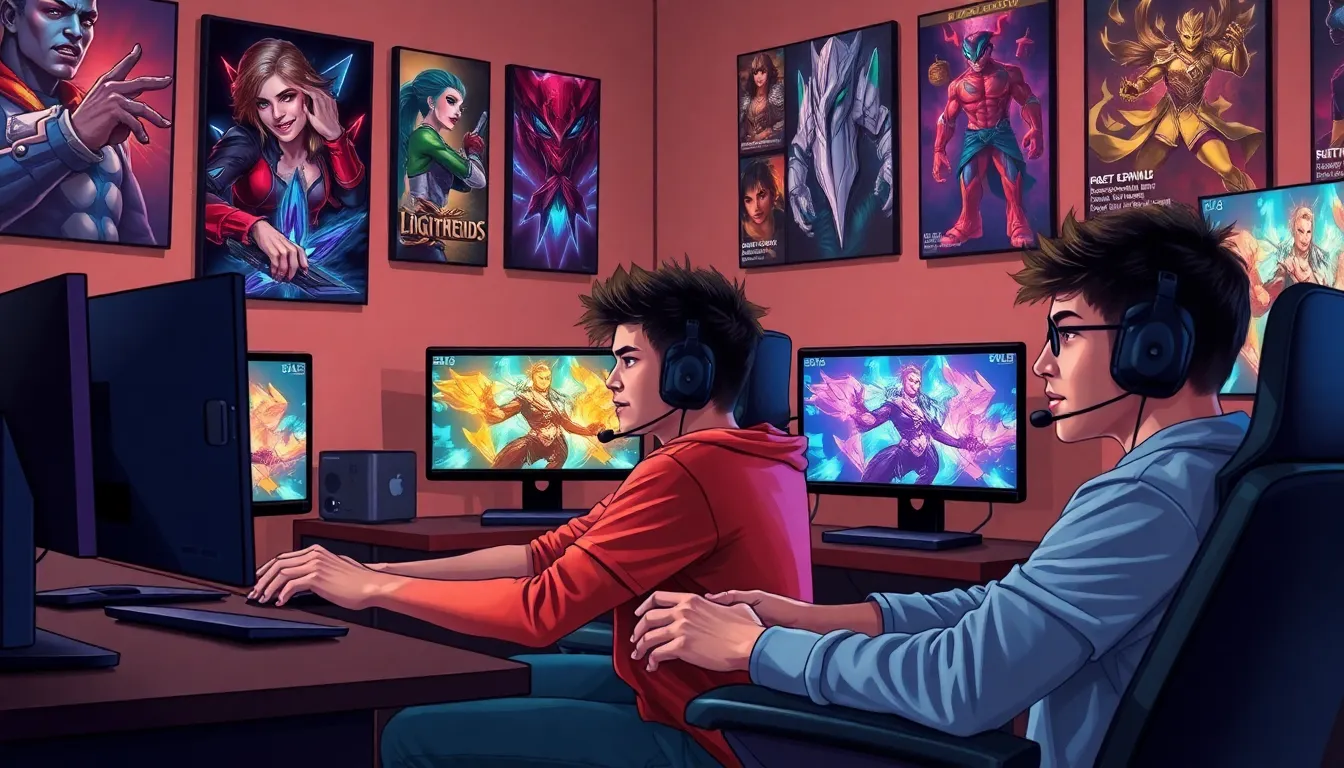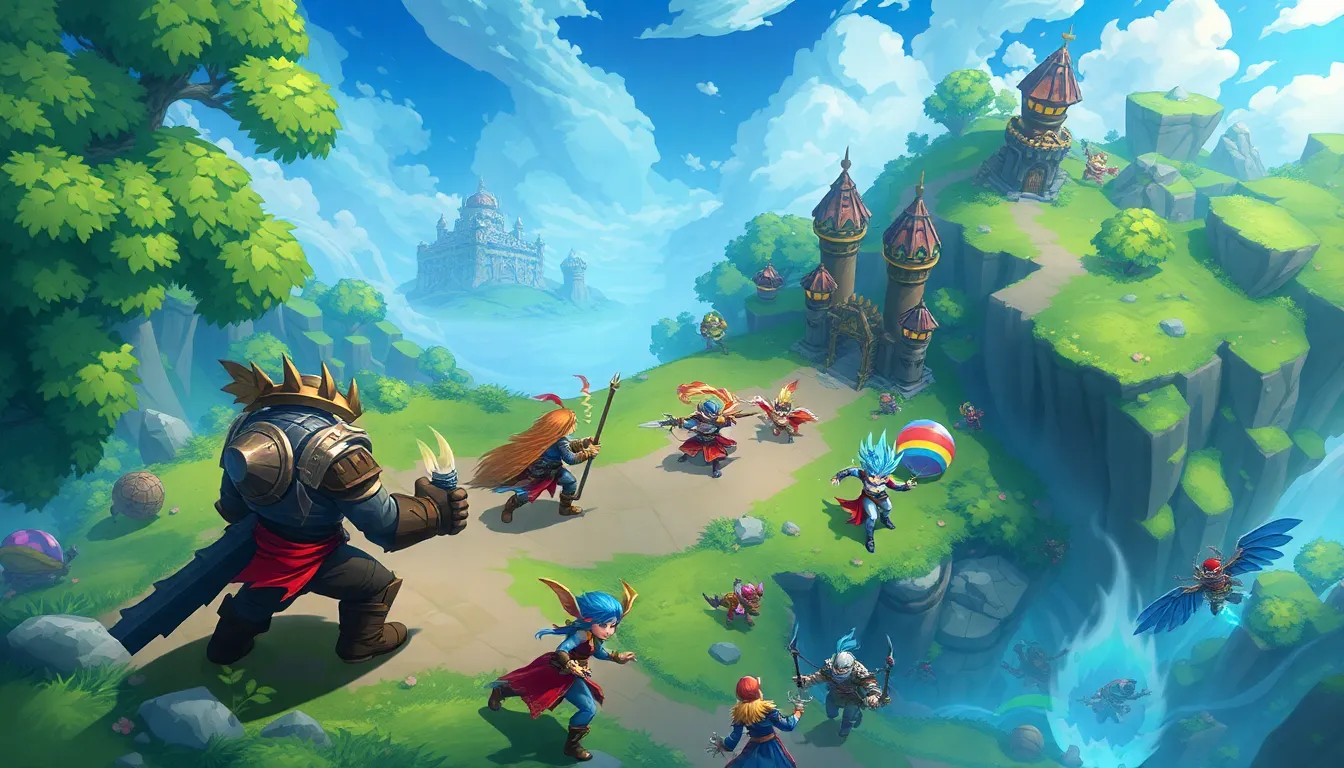Phone:
(701)814-6992
Physical address:
6296 Donnelly Plaza
Ratkeville, Bahamas.

In the vast universe of multiplayer online battle arenas, the term “predecessor MOBA” might sound like a fancy title for a long-lost relative at a family reunion. But don’t let the name fool you; it packs a punch! These games laid the groundwork for the genre, shaping the way players engage in epic battles and strategize with teammates.
Imagine a world where champions clash, minions march, and the thrill of victory dances tantalizingly close. Predecessor MOBAs are the unsung heroes that paved the way for the titans we know today. They brought innovation and excitement to the gaming landscape, turning casual players into fierce competitors. So buckle up as we dive into the quirky history and impact of these foundational games that still influence the gaming world today.
Predecessor MOBAs played a crucial role in the evolution of the multiplayer online battle arena genre. These games introduced innovative mechanics that enhanced player engagement. Titles such as “DotA,” “Heroes of Newerth,” and “League of Legends” emerged from the original “Warcraft III” mod, showcasing competitive gameplay and strategic depth.
Strategy became essential as players formed teams and executed tactics to secure victory. Community involvement not only shaped these games but also fostered a culture around them. Players engaged in discussions, created content, and shared strategies through forums and social media.
Character diversity stood out, with each champion possessing unique abilities. This aspect added complexity and variety to gameplay, encouraging players to learn and master different roles. The game designs emphasized teamwork, where individual skills contributed to overall team performance.
Leveraging regular updates and patches, developers maintained a balanced environment, enhancing the longevity of these games. Competitive events showcased top players, solidifying the esports aspect of MOBAs. In fact, tournaments attracted millions of viewers globally, demonstrating the genre’s massive appeal.
Adaptation influenced the evolution of modern MOBAs. Developers borrowed concepts from predecessor MOBAs, refining them into polished gameplay experiences. This legacy establishes a foundation for future games, ensuring that predecessor MOBAs retain significance in gaming history.
With this rich background, understanding predecessor MOBAs provides context for appreciating contemporary titles. Their influence is evident in game mechanics, community dynamics, and competitive structures that continue to shape the gaming industry.

Predecessor MOBAs exhibit several defining features that contributed to their enduring popularity. These elements enhance gameplay and keep players engaged.
Complex strategies define gameplay in predecessor MOBAs. Players navigate maps with distinct lanes and jungle areas, facilitating diverse tactics. Objectives like towers and barracks require team collaboration and strategic execution. Additionally, the involvement of minions and neutral monsters creates dynamic interactions, adding layers to player strategies. Each match presents unique challenges, ensuring no two games feel the same. Competitive structures, including ranked matches, promote player investment and progression.
Character mechanics serve as a cornerstone of predecessor MOBAs. Each champion possesses unique abilities that encourage players to explore different roles, from tanks to support and damage dealers. Players’ mastery of these skills enhances team synergy and strategic depth. Furthermore, experience and itemization systems allow for customization, tailoring gameplay to individual styles. Players also adapt to evolving character dynamics through regular patches, fostering a balanced competitive environment. Understanding these mechanics is crucial for effective teamwork and victory.
Predecessor MOBAs share several features with their classic counterparts. They emphasize strategic gameplay, requiring players to work collaboratively to achieve objectives. Community engagement flourishes through discussions, strategies, and content creation, much like in earlier games. Heroes possess distinct abilities, offering unique play styles that echo the character diversity seen in classic titles. Game mechanics, such as lane control and team fights, remain fundamental across the genre, ensuring players engage in intense competition.
Differences emerge when comparing predecessor MOBAs to modern titles. Player progression systems have evolved significantly, leading to more complex itemization and experience mechanics unique to recent releases. Current MOBAs often incorporate advanced graphics, enhancing visual immersion. In contrast, older games featured simpler designs and mechanics. Matchmaking systems, vital in today’s competitive landscape, offer balanced team compositions, differing from the more casual setup of predecessor titles. Overall, the evolution of the genre showcases an ongoing balance between tradition and innovation.
Engagement among players forms the backbone of predecessor MOBAs. Active feedback from the community shapes game development and enhances user experience.
Developers often listened to player feedback, making adjustments based on player suggestions. Constructive criticism improved gameplay mechanics and balance. Surveys and forums served as platforms for players to express thoughts, allowing developers to understand the community’s needs. Engagement through social media amplified this interaction, fostering discussions among players about strategies and character choices. Community-driven content, such as guides and tutorials, emerged, showcasing players’ knowledge. This cycle of feedback and implementation built trust between developers and players, creating a strong community bond.
Exciting community events and tournaments drew players into the competitive scene. LAN parties and online competitions provided opportunities for players to showcase skills. Organizations often sponsored tournaments, offering prizes that motivated participants. Spectator modes allowed non-participants to enjoy the action, enhancing overall community involvement. Grassroots events nurtured local talent while introducing players to the esports aspect of the genre. These events encouraged friendships, collaborations, and a sense of belonging that kept players engaged long-term. Competitive play fostered an evolving community where strategies and skills constantly improved through shared experiences.
The future of predecessor MOBAs remains bright, shaped by continuous innovation and community engagement. Emerging technologies, like artificial intelligence, may enhance gameplay experiences, offering smarter matchmaking and personalized challenges. Developers prioritize player feedback to refine game mechanics, ensuring they align with evolving player expectations.
Character design continues to transform, with an emphasis on diversity and balance. Each champion could undergo periodic updates based on competitive trends, allowing adaptations that keep gameplay fresh. New environments might emerge, featuring intricate maps that drive exploration and strategic depth.
Competitive gaming’s prominence fosters growth in the esports scene. Tournaments, both local and global, are likely to attract larger audiences, enhancing community interactions. Additionally, streaming platforms’ rise amplifies content creation, drawing new players into the fold.
Cross-platform functionality could further bridge gaps among player bases. As mobile platforms become more popular, accessibility for a broader audience can drive engagement. Enhanced graphics and immersive experiences remain essential, setting new standards for visual appeal.
Different game modes may diversify player engagement, offering casual and competitive formats. Innovations like seasonal events can provide fresh content and foster excitement. Finally, balancing design with player agency ensures enjoyment while maintaining competitiveness.
Overall, predecessor MOBAs’ future hinges on collaboration between developers and players. This partnership will define how the genre evolves, preserving its legacy while embracing new horizons.
Predecessor MOBAs have left an indelible mark on the gaming landscape. Their innovative gameplay mechanics and community-driven development set the stage for the genre’s evolution. As players continue to engage with these foundational titles, the blend of strategy and collaboration remains a cornerstone of the experience.
Looking ahead, the potential for growth is immense. Emerging technologies and player feedback will likely shape the next generation of MOBAs. By embracing innovation while honoring their roots, these games can continue to thrive, captivating new audiences and fostering lasting connections within the community. The legacy of predecessor MOBAs is not just a chapter in gaming history but a vibrant and evolving narrative that promises to inspire future developments in the genre.